Canon EOS 650D Review
Canon EOS 650D
Does the addition of a touchscreen elevate the Canon 650D to DSLR greatness?
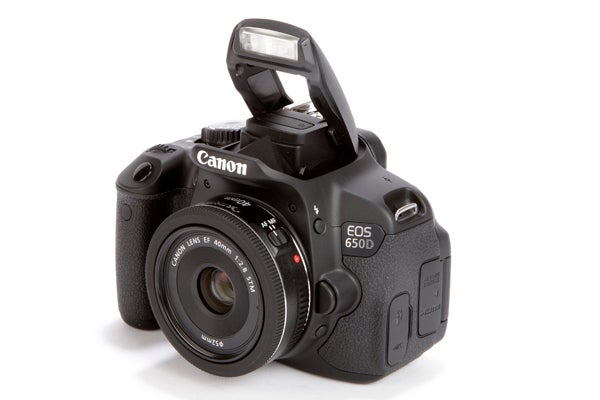
Verdict
Pros
- Touch-screen adds to user experience
- Improved autofocus performance
- Good image quality
Cons
- Touch-screen icons a little small
- Slow processing of digital filter effects
Key Specifications
- Review Price: £800.00
- 16MP APS-C CMOS sensor
- ISO 100 - 12,800 (ext. to 25,600)
- 3in, 1040k-dot vari-angle touch-screen
- 1080p Full HD video recording at 30fps
- 9 cross-type AF points
The Canon 650D is the latest addition to Canon’s mid-range DSLR lineup. For the time being it will sit alongside the 18-month-old 600D, though it’s likely it will eventually replace it completely. Upgrades over the older model are largely incremental, although taken collectively they do add up to a more flexible camera. The big talking point though is the addition of a new touchscreen monitor. While touchscreens are widely used on more expensive compacts and compact system cameras, the 650D’s claim to fame is that it’s the first DSLR to employ one.
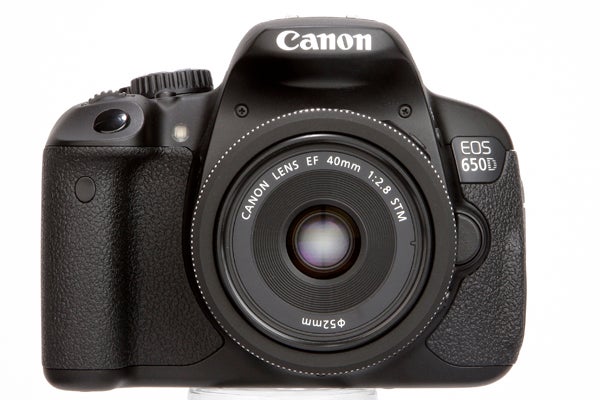
In addition to the new touchscreen the 650D also benefits from a number of other upgrades and improvements to its core specifications. Perhaps the most significant of these is the APS-C CMOS sensor at its heart. While effective resolution remains pegged at 18MP, the 650D’s revised sensor now employs some of the pixels in the central part of the chip for phase detection AF. Canon calls this ‘Hybrid CMOS AF’ and claims that it improves focus performance when the camera is being used in live view mode and when shooting video. However, you’ll still have to rely on the standard contrast-detection AF method when the subject you’re shooting lies outside of the sensor’s central area.
The 650D’s image processor has also been upgraded to the DIGIC 5 version, and while this isn’t quite as fast as the DIGIC 5 processor used in Canon’s flagship EOS 1Dx and 5D Mark III models, it does offer a six-fold increase in processing speeds over the old DIGIC 4. Sensitivity, meanwhile, ranges from ISO 100-12,800 in standard mode, with an extended mode of ISO 25,600 making the 650D a stop faster than its predecessor.
On the back of the camera sits a 3in Clear View II LCD screen that offers a 1040k-dot resolution. The main difference between this and the Clear View screen found on the 600D is that the gap between the screen and the front panel has been removed – a technique used on many new phone and tablet screens to reduce internal reflections, increase viewing angles and improve overall image quality. As per the 600D the vari-angle screen pivots on a side hinge that allows it to be folded out by 175° and rotated through 270°.
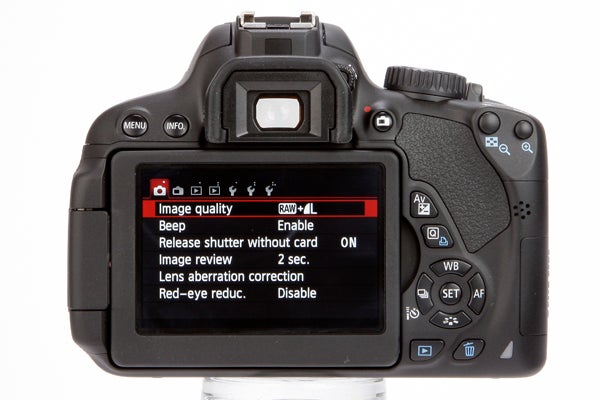
Video recording capabilities extend to 1080p Full HD at a choice of 25 or 30fps, backed up by 720p HD recording at 50 and 60fps. Sound is recorded in stereo via two microphones on the top-plate, with a wind-cut filter available if required. An external microphone jack is also present should you want to attach a dedicated microphone to further improve audio quality. There’s no headphone jack for monitoring audio levels, though.
Conventional autofocus has also seen a performance boost. Whereas the 600D offered only one cross-type AF sensor in the centre of the viewfinder, all nine AF points of the 650D are of the cross-type variety. This makes the 650D’s AF module more flexible than its predecessor, as each AF point is equally able to function irrespective of whether the camera is being held in landscape or portrait orientation. In addition to improved AF performance, the 650D also sees a boost in Continuous shooting speed from 3.7fps to a much more credible 5fps. Whereas Canon’s consumer-grade DSLRs have traditionally been a bit slower than their direct rivals, the increased burst speed of the 650D puts it on par, something that will doubtless increase its overall appeal to sports and action photographers.
Also new to the 650D is a Multi Shot Noise Reduction feature. This basically combines four images into one to reduce the effects of noise. In addition, there’s also a new Handheld Night Scene mode that works on much the same principle of combining multiple images into one, although its primary goal is to reduce blur rather than noise. While the 650D offers a choice of six white balance presets, there isn’t any way to set it numerically using the Kelvin scale. This does strike us as a rather odd omission, given how it’s a fairly standard feature on other DSLRs, even entry-level ones. That said, the camera does allow you to make small adjustments towards particular colour hues, which can be quite useful.
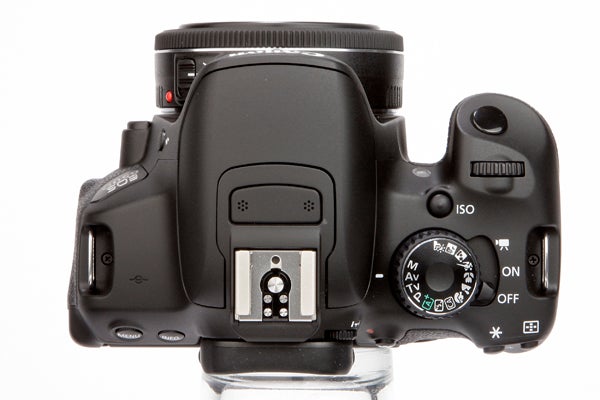
Overall build quality is pretty good, with the stainless steel chassis and polycarbonate resin shell feeling robust enough while keeping weight down to just 575g. The grip, thumb rest and side all benefit from a rubberised finish too, making the camera feel more secure in the hand. The grip itself is rather shallow compared to some DSLR, which makes it better suited to those with smaller hands, but it’s still markedly larger and more comfortable than any grip on a CSC.
In terms of design the 650D looks a lot like its predecessors, albeit with a handful of modifications. For example, the built-in stereo microphones are now located on top of the camera rather than on the front. In addition, the Menu and Info buttons have lost their edges to become round, while the thumb rest on the back is now slightly larger too.
While button shapes may have changed slightly, button layout remains pretty much the same as on the 600D, save for the removal of the Display button that used to be found on the top-plate and the addition of a dedicated ‘Movie’ position to the main on/off switch. While the former is unlikely to be missed, the inclusion of a Movie position on the main on/off switch can be a bit annoying as it’s quite easy to accidentally overshoot the ‘on’ position when turning the camera on, inadvertently putting the camera into movie mode instead.
The Canon EOS 650D’s all-new touchscreen functionality is very well integrated, which really adds to the overall user experience by making the camera more intuitive to use. Photographers likely to appreciate it the most are those who prefer to shoot using live view rather than the viewfinder, although it will also benefit those who will the vari-angle LCD to shoot at acute angles, where it might be impractical to reach all of the physical buttons.
In use, the big practical benefit of the 650D’s touch-screen is that it allows you to pinpoint where you want to focus simply by touching that part of the screen. Depending on how you’ve set the camera up, a single jab of the finger can be used to lock focus to that particular area, or to focus on that area and then record an image all in one go. And, of course, not having to reach for the shutter release also has its benefits if you need to shoot stealthily.
Performance
In terms of responsiveness the Canon EOS 650D’s screen is certainly on a par with an average smartphone if not slightly better. Using a finger to zoom around an expanded image in Payback mode, the image moves promptly around the screen with no lag. Ideally we’d like to see some kind of functionality assigned to double-tapping the screen though, for example zooming in and out. There’s also a slight delay as the camera renders individual images at their full quality.
The touchscreen has other benefits too. Menu navigation, for example, is also simplified; while scrolling through the various menus you need only to take your finger off at the desired function to call up its various options. Also, when using the camera in live view, pressing the Q button will bring up commonly used functions down the sides of the screen, which you can then tap.
Canon has exceeded expectations to deliver touchscreen functionality that actually changes the whole user experience, rather than one that just allows certain functions to be selected via the screen. In fact, the only minor niggle we have are that the on-screen controls are relatively small, which might make operation slightly hard work for anyone with sausage-like fingers. 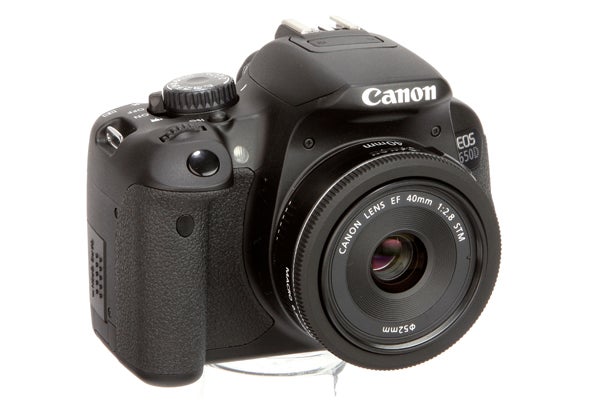
The display itself scores highly too, 3in across and with 1040k dot resolution. It can be a bit of a struggle to see it clearly in bright but this is a problem that’s common to many camera displays. In less intense conditions it displays the scene naturally. The viewing angle is impressively wide too, noticeably better than the 600D in fact.
And so to autofocus. While the EOS 600D’s regular phase-detection AF system proved adequate enough, the use of cross-type AF points right across the 650D’s viewfinder demonstrably improves performance. Testing the two cameras side by side we found that the peripheral points of the 600D’s AF system missed some flat, low-contrast subjects whereas the 650D was able to lock on with a much higher rate of success.
While the Canon EOS 650D’s top 5fps burst speed still falls short of rivals such as the Sony A57 and Pentax K-30, it’s still an improvement over the 4fps of the Nikon D5100. That said, we were unable to record the claimed 22 consecutive JPEG frames, even when using the fastest memory card available and with all processing options kept to a minimum.
Additional Modes
Thankfully, the three-image HDR Backlight Control setting tends to tread on the side of lifelike with improved detail in lighter and darker areas, rather than producing a radical albeit unnatural-looking HDR images. However some sharpness is lost in the process and for this reason it may be preferable to shoot in Raw in less severe lighting conditions and then increase shadow and highlight detail in post-processing. 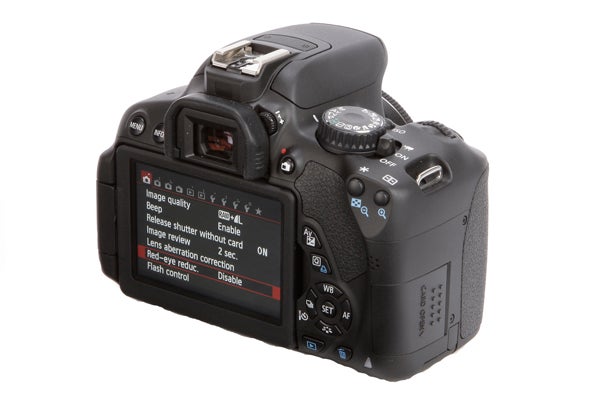
The 650D’s built-in Creative Filters offer three levels of intensity, which means they can be used to achieve subtly different effects. Processing times are a little on the long side though. One benefit of processing images post-capture though is that the original version is retained.
Metering is handled via the 650D’s iFCL 63-zone metering system, and for the most part this proves highly accurate with no particular bias towards shadows or highlights, including high-contrast situations. The Auto Lighting Optimizer works well too, although it can make certain images – particularly those captured in high-contrast conditions – look a little HDR-esque, which may not be to everyone’s tastes.
Straight from the camera colour appears neutral and lifelike and the differences between the various Picture Style processing options aren’t as pronounced as you might expect. Auto white balance deals well with both natural and artificial light, although it does tend to produce slightly cooler images. 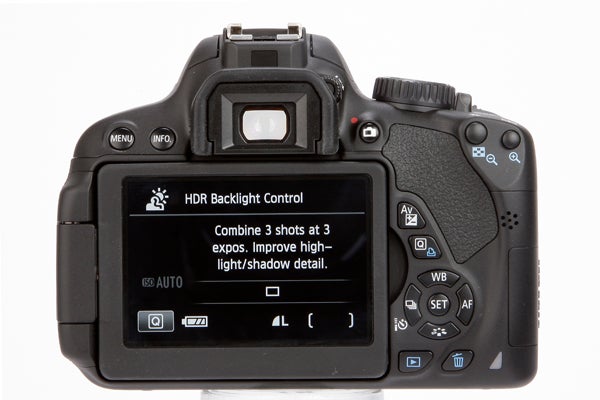
As might be expected JPEGs come out slightly sharper and more finely detailed than their Raw counterparts and contrast also receives a slight boost too. Thankfully though Canon hasn’t been too aggressive with its default sharpening settings. If you’re buying the Canon EOS 650D with the 18-55mm f/3.5-5.6 IS II kit zoom, be aware that some softness is noticeable at either end of the focal range particularly when used at its widest apertures. Distortion and chromatic aberrations also make themselves known.
ISO performance is pretty good on the whole and while some noise does begin to show itself as low as ISO 400 images retain their integrity right up until ISO 12,800. The camera’s built-in noise reduction only advisable if JPEGs are not destined being viewed at their full size – if they are, the blurring effects are too apparent.
Verdict
The Canon EOS 650D is the first mid-range DSLR to offers touch-screen functionality and is all the better for it. While Canon has implemented the technology well, it hasn’t made it obligatory to the camera’s general operation. Autofocus performance has seen a fairly major improvement too, with the While other changes are more incremental they do make the EOS 650D a more enjoyable camera to use than its predecessor. At around £230 more than the 600D though, the 650D can’t be said to be particularly good value at the moment. Once the price falls a little though it will certainly make a decent upgrade option for users of previous Canon DSLRs.

The full ISO test scene in all its Kellogs Crunchy Nut goodness. The following images are all 100% crops taken from the nut at the centre of the image above.

ISO 100

ISO 200

ISO 400

ISO 800

ISO 1600

ISO 3200

ISO 6400

ISO 12,800

1/125sec @ f/5.6, ISO 100, 80mm, AWB

1/320sec @ f/8, ISO 100, 80mm, AWB

1/160sec @ f/11, ISO 100, 80mm, AWB

1/30sec @ f/16, ISO 100, 24mm, AWB

1/40sec @ f/13, ISO 4000, 24mm, AWB
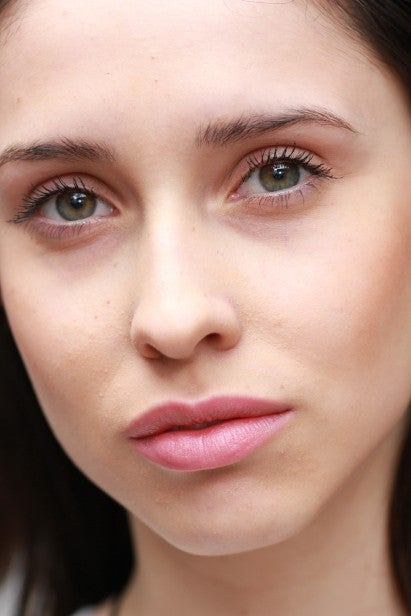
1/125sec @ f/4, ISO 100, 150mm, AWB
Trusted Score
Score in detail
-
Value 7
-
Design & Features 8
-
Image Quality 8
-
Build Quality 7

